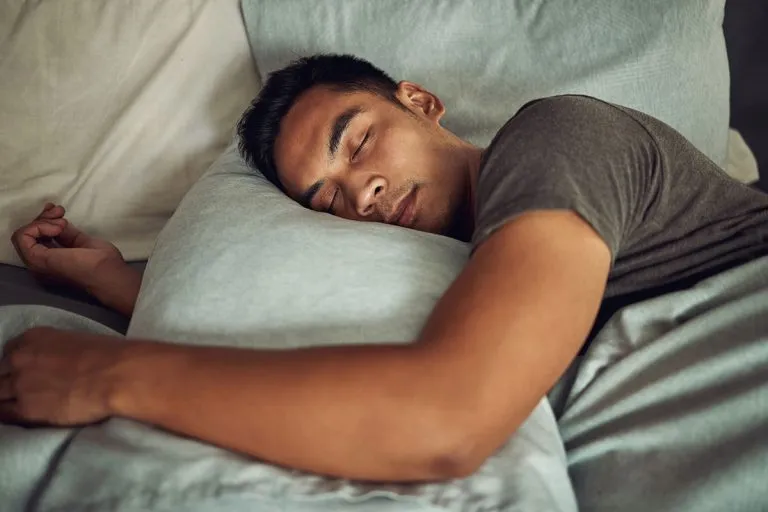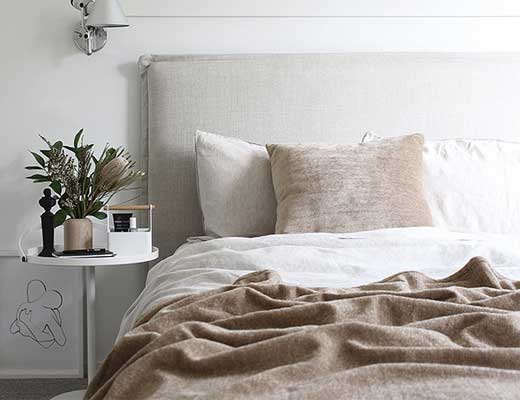Sleep is the quiet architect of your days. When it’s steady, mood lifts, cravings level out, hormones speak clearly, and decisions feel easier. When it’s shaky, everything crowds in. This reset doesn’t ask for a perfect life; it leans on a few levers that move the most: light, timing, temperature, and nervous system safety. Give it one week. Keep what works.
Why sleep is foundational (for hormones, mood, and clarity)
Your body does deep repair at night—immune calibration, memory consolidation, glucose regulation, and hormonal signaling. Consistent, sufficient sleep acts like a gentle governor on stress and appetite while making it easier to choose nourishing food and movement tomorrow. In short: sleep is not a reward; it’s the base layer.

The big levers: light, timing, temperature, nervous system
- Light: Morning daylight tells your brain, it’s daytime; bright light at night says keep going. We’ll use both intentionally.
- Timing: Even a 60–90 minute swing in bedtime can wobble your internal clock. We’ll pick a window and protect it.
- Temperature: Most bodies sleep best in a cool room (think 17–19°C / 63–66°F).
- Nervous system: If your body doesn’t feel safe, it won’t let you fall (or stay) asleep. We’ll layer in micro‑rituals that whisper, you’re okay.
The 7‑night plan (step‑by‑step)

The 7‑night plan (step‑by‑step)
How to use this: Start any evening. If you’re traveling, begin the day you land. If one night goes sideways, skip the guilt and show up for the next night.
Night 1 — The Dimmer
- Goal: Create a 90‑minute sunset indoors.
- Do: Switch to warm lamps only. Dim screens to the lowest comfortable setting (or use nighttime mode).
- Nervous system cue (5 min): Sit on the edge of your bed, one hand on belly, one on heart; inhale 4, exhale 6–8 for 20 breaths.
- Bedtime window: Choose a 60‑minute lights‑out window you can sustain all week.
Night 2 — The Wind‑Down
- Goal: Teach your body a pre‑sleep sequence.
- Do: 10 minutes of something predictably calming: gentle stretch, hot shower, or reading paper pages.
- Add: A 2‑minute “brain dump” in a notebook: to‑dos, worries, anything that would otherwise spiral. Close the notebook—signal complete.
Night 3 — The Cool‑Down
- Goal: Temperature drop for sleep onset.
- Do: Lower the thermostat or use a fan. Warm shower before bed (counterintuitive, but it helps you cool after).
- Upgrade: Swap heavy duvet for layers; socks can help if cold feet keep you awake.
Night 4 — The Rhythm
- Goal: Reinforce a consistent anchor.
- Do: Wake within the same 60‑minute window you chose, even if the night wasn’t perfect. Step into outdoor light within an hour of waking (2–10 minutes).
- Nervous system cue (2 min): Standing, exhale with a soft hum for six counts. Repeat ten times.
Night 5 — The Screen‑Line
- Goal: Protect the last hour.
- Do: Move messaging and news earlier. In the final 60 minutes, allow only low‑arousal inputs (paper book, gentle music, light tidy).
- If mind races: Try legs‑up‑the‑wall for 2–5 minutes; then breath again: inhale 4, exhale 8.
Night 6 — The Plate
- Goal: Eat in a way that helps sleep.
- Do: Finish dinner 2–3 hours before bed. Build a plate with protein, color, and a modest portion of slow carbs (sweet potato, oats, legumes, quinoa).
- Skip/limit: Late caffeine; alcohol inside 3–4 hours of bedtime (it fragments sleep, even if it helps you doze off).
Night 7 — The Review
- Goal: Keep what worked.
- Do: Read your week briefly. Circle three practices that felt easiest. Commit to those on weekdays; let weekends flex without unraveling the core.
Daytime cues that make nights easier
- Morning light (2–10 minutes): Outdoors is best; window glass filters too much signal.
- Movement: 20–45 minutes most days at an easy conversational pace; add two short strength sessions weekly.
- Caffeine window: Keep coffee/tea to the first 6–8 hours of your day.
- Micro‑rests: Two 60‑second pauses (late morning, late afternoon): unclench jaw, lower shoulders, 3 slow breaths.
Travel & jet‑lag: a soft protocol
- Before you fly: Start nudging sleep/wake 30–60 minutes toward the destination time for two nights. Hydrate well.
- On the plane: Eat lightly; if it’s “night” at your destination, eye mask + earplugs and skip screens.
- On arrival: Morning light if you land in local morning; afternoon light + a brisk walk if you land later.
- First night: Keep your wind‑down, even if shortened to 5 minutes. A familiar ritual tells your body, we’ve arrived; it’s safe to sleep.
Food, caffeine, alcohol: timing that helps
- Protein at breakfast: Steadies energy and prevents late‑day overeating.
- Evening carbs (modest): If you notice they help you feel calm, keep them.
- Magnesium‑rich foods: Pumpkin seeds, cacao nibs, leafy greens, legumes; if taking magnesium glycinate, discuss dosage/timing with a clinician.
- Alcohol: If you choose it, enjoy earlier and sparingly; save your deeper sleep.
Bedroom makeover (on any budget)
- Free: Remove visual clutter, close closet doors, move charging cables out of sight, crack a window if climate allows.
- Low cost: Eye mask, earplugs, warm bedside lamp, draft stopper, floor fan.
- Invest if you can: Room‑darkening curtains, supportive pillow, breathable bedding. A white‑noise machine can be magic in noisy places.

Troubleshooting & when to seek help
- Can’t fall asleep: Try a lower‑stakes target: rest time, not sleep time. Lie down with eyes closed and count slow breaths to 100. If you’re wired, get up, dim light, read a dull page, try again.
- Wake at 2–4 am: Check late‑day caffeine, stress spikes, and late alcohol. Add a small, protein‑rich afternoon snack. Keep room cooler.
- Mind racing: Name 3 things you can see, 2 you can feel, 1 you can hear. Then return to slow exhales.
- Ask for help: Long‑standing insomnia, loud snoring, gasping at night, restless legs, chronic pain, depression/anxiety—loop in a qualified clinician. Sleep is healthcare.
